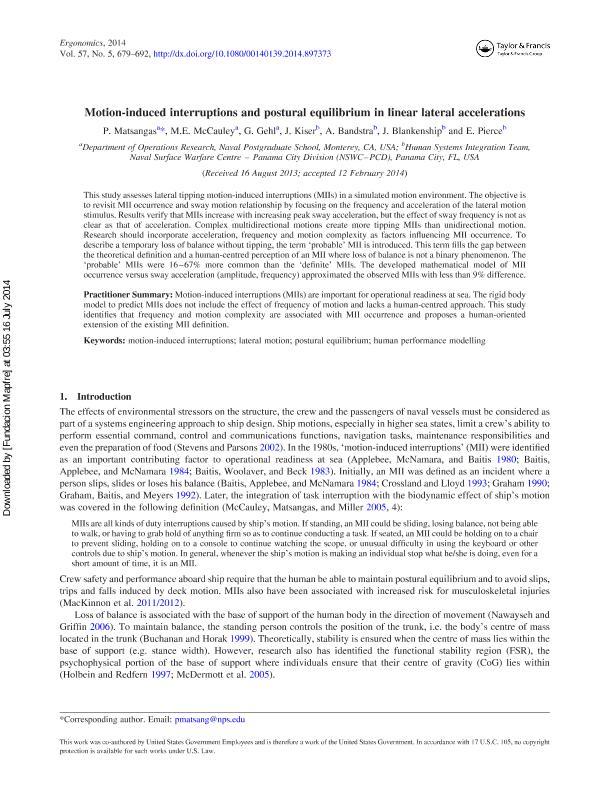Motion-induced interruptions and postural equilibrium in linear lateral accelerations

Contenido multimedia no disponible por derechos de autor o por acceso restringido. Contacte con la institución para más información.
| Tag | 1 | 2 | Value |
|---|---|---|---|
| LDR | 00000cab a2200000 4500 | ||
| 001 | MAP20140025602 | ||
| 003 | MAP | ||
| 005 | 20140724124908.0 | ||
| 008 | 140716e20140505esp|||p |0|||b|spa d | ||
| 040 | $aMAP$bspa$dMAP | ||
| 084 | $a875 | ||
| 245 | 0 | 0 | $aMotion-induced interruptions and postural equilibrium in linear lateral accelerations$cP. Matsangas...[et.al] |
| 520 | $aThis study assesses lateral tipping motion-induced interruptions (MIIs) in a simulated motion environment. The objective is to revisit MII occurrence and sway motion relationship by focusing on the frequency and acceleration of the lateral motion stimulus. Results verify that MIIs increase with increasing peak sway acceleration, but the effect of sway frequency is not as clear as that of acceleration. Complex multidirectional motions create more tipping MIIs than unidirectional motion. Research should incorporate acceleration, frequency and motion complexity as factors influencing MII occurrence. To describe a temporary loss of balance without tipping, the term probable¿ MII is introduced. This term fills the gap between the theoretical definition and a human-centred perception of an MII where loss of balance is not a binary phenomenon. The probable¿ MIIs were 1667% more common than the definite¿ MIIs. The developed mathematical model of MII occurrence versus sway acceleration (amplitude, frequency) approximated the observed MIIs with less than 9% difference. | ||
| 773 | 0 | $wMAP20100019818$tErgonomics : the international journal of research and practice in human factors and ergonomics$dOxon [United Kingdom] : Taylor & Francis, 2010-$x0014-0139$g05/05/2014 Volumen 57 Número 5 - mayo 2014 |

